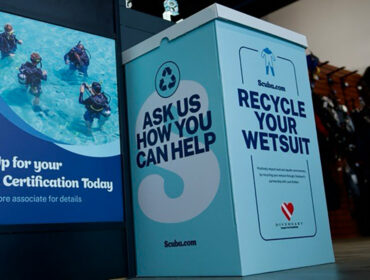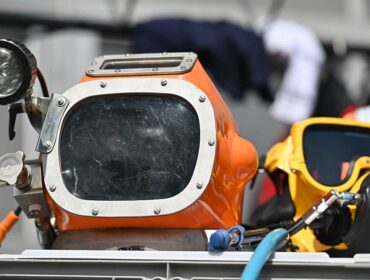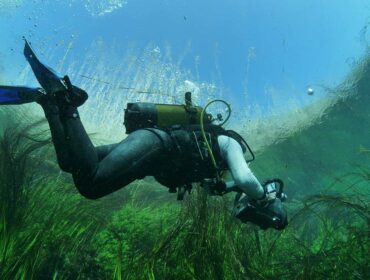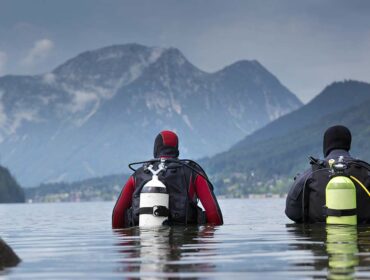In our previous article about cave diving, you learned about sumps, mines, ice caves, blue holes, sea caves, lava tubes, and coral caves. Keep reading to learn about potential hazards in underwater caves.
To many people, the hazards of diving in underwater caves are obvious, yet there are still occasional accidents and even deaths due to divers not fully understanding the risks involved with cave diving. While our series on cave diving is nothing compared to an actual cave diver course conducted by a trained professional, keep reading to learn some of the potential hazards of diving in underwater caves.
Getting Lost
In traditional diving, getting lost usually means a long swim back to the boat or shore. In cave diving, getting lost can easily result in death. If you are unable to find your exit, or at least a breathable air pocket, when your gas supply runs out, so does your life.
Running Out of Gas
With recreational diving, we learn the controlled emergency swimming ascent which allows us to surface with our one last breath. In cave diving, you are typically unable to simply exhale and swim to the surface when you run out of gas.
Loss of Visibility
Most caves are formed by some sort of erosion and frequently that eroded material ends up on the floor of the cave. Through poor buoyancy control, divers can kick up this sediment reducing visibility to nothing. Now you can’t see your buddy and your backup supply of gas. You also run the risk of losing the guideline and therefore your way back to the cave entrance.
Loss of Guideline
The guideline is how you get in and out of a cave. If you lose it, you stand the very real chance of not finding your way back to the exit. Not finding the exit means running out of gas.
Team Separation
In most open water diver courses, you’re trained to look for your buddy up to a minute before surfacing in the event of a separation. In cave diving, again, surfacing isn’t as simple. Leaving a lost buddy can be a death sentence.
Equipment Malfunction
Similar to running out of gas, an equipment malfunction in a cave can be catastrophic compared to the same equipment failure outside an overhead environment. Through proper cave diver education, you’ll be trained on how to deal with many of the most common malfunctions.
Restrictions
Cave systems by nature have some tight passageways. If you get stuck in one, you run out of gas.
Entanglement
With a primary line plus the possibility of several jump lines, you have quite a bit of opportunity for entanglement. Also, depending on the speleothems in the cave system, you could easily become entangled on the cave itself.
Risk of Collapse
While virtually unheard of, there is still the possibility of a cave collapsing either on you, or blocking your return to the exit.
Flow Reversal
In some cave systems, there is the potential for the flow of the water to change direction, making exiting more difficult, and time and gas consuming.
Siphon Conditions
Additional water flow due to storms, debris falling in the water, or sediment being kicked up can all create dangerous conditions inside the cave and make exiting more difficult.
Toxic Gasses in Dry Chambers
It should never be assumed that an air pocket in a cave contains breathable air. A general rule of thumb, though inexact, is that if you see other life in the cave such as bats, the air is breathable, yet should still be reserved only for emergency situations.
Falling Debris
Whether it’s vegetation above the entrance or a speleothem inside the cave, falling debris can damage equipment or pin a diver.
Hypothermia
Especially in ice caves, hypothermia can be a very real concern.
Extreme Depth
Depending on your cave system, you may encounter very extreme depths. Some caves have very deep entrances while the rest of the dive is relatively shallow, so proper gas planning and decompression procedures must be accounted for.
Changing Conditions
Strong winds or a shifting current in open water is easily dealt with, but changing conditions in a cave can be life threatening.
Marine Life
Especially in cenotes, you may encounter less-than-friendly marine life such as alligators or poisonous snakes.
Currents, Surge & Surf
Especially important for sea caves and coral caves, currents, surge, and surf can push you further into a cave or make it more difficult to exit one you’re in.
Despite all of these potential hazards, cave diving is an incredible experience for many. Keep these hazards in mind, however, before thinking you could enter a cave without proper training.





